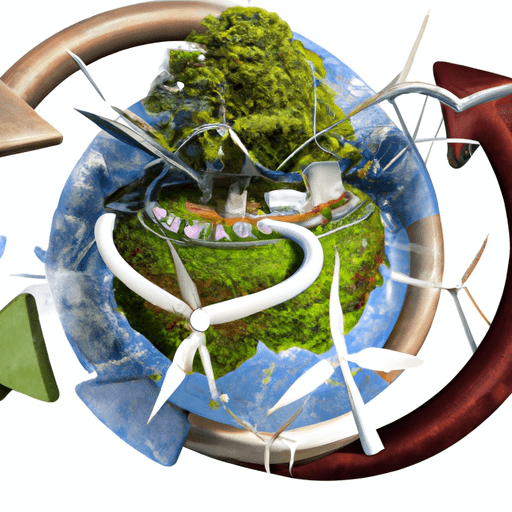The Role of Circular Economy in Achieving Sustainable Development Goals
One of the contemporary strategies for achieving sustainable development goals is the concept of a circular economy. This economic model is recognised for its significant impact in promoting sustainable growth, environmental protection and social inclusion and is gaining significant traction worldwide. This article delves into the principles of a circular economy, its alignment with global sustainability goals and the challenges faced, providing examples of its successful implementation.
The Principles of a Circular Economy
In contrast to the traditional linear take-make-dispose model, a circular economy adopts a regenerative approach by design, focusing on reduce-reuse-recycle. This model is based on three core principles:
- Design out waste and pollution
- Keep products and materials in use
- Regenerate natural systems
Alignment with Sustainable Development Goals
A circular economy aligns with the United Nation's Sustainable Development Goals (SDGs). It contributes to responsible consumption and production (SDG 12), promoting economic growth and decent work for all (SDG 8), and industrial innovation and infrastructure (SDG 9). It also aids in preserving life below water (SDG 14) and life on land (SDG 15) by reducing waste and pollution, and supports actions against climate change (SDG 13) through lower carbon emissions.
Key Contributions of the Circular Economy
The circular economy has been pivotal in many sectors. In the manufacturing industry, for instance, companies are adopting circular approaches by designing products for durability, reuse and recyclability, reducing waste and consumption of resources. In the service sector, product-as-a-service models such as leasing, sharing, or renting products instead of buying them outright, are becoming increasingly prevalent.
Successful Implementations Worldwide
Many economies have already embraced the circular approach. The Netherlands, for instance, intends to attain a full circular economy by 2050. Similarly, China has also implemented a nationwide Circular Economy Promotion Law. By prioritising eco-design and establishing frameworks for extended producer responsibility, these nations have made strides in resource efficiency and waste reduction.
Potential Challenges and Solutions
Despite the benefits, the transition to a circular economy also brings challenges, including redefining business models, lack of knowledge and technologies, and regulatory barriers. Efforts should be made in fostering collaboration, expanding education and training, promoting technical innovation, and adapting regulations towards enabling a circular economy.
Conclusion
In the quest for more sustainable societies, the circular economy is not just a conceivable option – but a pressing necessity. By eliminating waste and continuously circulating resources, this model embodies an innovative remedy for overconsumption and environmental degradation while driving economic prosperity and social equity.

















Comments
Leave a Comment